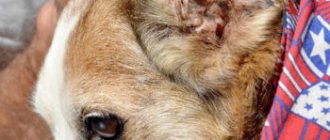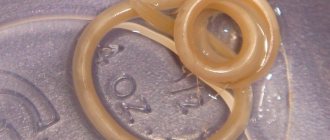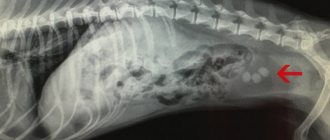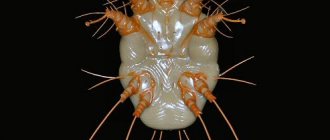Functions of lymph nodes in a dog's body
Lymph nodes are the main structures of the lymphatic system. They perform a number of important functions in the human body and our smaller brothers.
Functions of lymph nodes in a dog’s body:
- Barrier-protective. Lymph nodes are a kind of biological filter in the body. Prevents the spread of pathogenic agents in the body. They retain foreign cells, bodies, foreign bodies entering the lymph and blood.
- Homepoetic. Lymph nodes take part in homepoiesis.
- Filtration. The nodes filter blood flowing to organs and tissues.
- Immune. In the nodes, immunocytes, plasma cells, and protein bodies of globulin nature are formed, which are responsible for the dog’s immunity. T- and B-lymphocytes (cellular structures of humoral, cellular immunity) determine the immune response in case of infection, penetration of viruses and bacteria into the body.
- Reservoir. Lymphatic vessels are a depot for lymph.
Lymph nodes also participate in metabolic processes in the body of animals, carrying out the exchange of proteins, fats, carbohydrates, and vitamins.
Functions of lymph nodes
What role do lymph nodes play in this system and what are they? In appearance, lymph nodes are round or oval formations with a diameter from a couple of millimeters to a centimeter or even two.
The function of the lymph nodes is extremely important, as they are a mechanical filter of foreign particles and cancer cells. In addition, it is in the tissues of these organs that the formation of lymphocytes occurs, without which the functioning of the body’s immune system is impossible.
Note that lymph nodes are always grouped so as to serve as a barrier to the most likely routes of infection. In the literature, this type of arrangement is called a “package”. In particular, there are many of them in the groin area, in the armpits, in the dewlap, as well as in the subcutaneous tissue of the head (for example, packets of nodes tightly surround the salivary glands).
But still, the “record holders” for the number of lymph nodes are the abdominal and thoracic cavities. Finally, along the course of all major blood vessels there are also sets of lymph nodes. In addition, the smallest lymphatic capillaries penetrate almost all organs and tissues.
What is lymphadenitis
Lymphadenitis is a disease in which the inflammatory process affects the tissue of the lymph node. The pathology is manifested by pain on palpation of the node, compaction, increase in the volume of nodes due to an increase in the number of lymphocytes, the flow of leukocytes into the node from the source of primary inflammation. Pain occurs due to stretching of the node capsule by cellular structures.
Important! Lymphadenitis in rare cases is an independent disease. Inflammation of the nodes is a kind of protective reaction of the body.
Lymphadenitis affects dogs of all age groups. There is no breed or genetic predisposition. At risk are puppies with an immature, incompletely formed immune system, old, elderly animals weakened by infections and diseases, and street stray dogs.
The main causes of lymphadenitis in dogs:
- acute, chronic inflammatory processes in the body;
- allergic reactions;
- viral-bacterial, parasitic infections;
- autoimmune diseases;
- systemic diseases occurring with acute inflammation;
- mycoses (fungal infections);
- intestinal infections;
- feeding stale, low-quality feed, contaminated with toxins, fungal spores;
- dermatitis, dermatoses of various etiologies and genesis;
- dental infections, diseases of the oral cavity, teeth;
- bruises, deep wounds, trophic, purulent wounds through which pathogenic flora penetrates;
- sexual infections;
- congenital, acquired pathologies, blood diseases;
- uncontrolled use of medications, in particular steroids;
- connective tissue diseases;
- myositis (inflammation of muscle structures);
- malignant tumors that metastasize to nodes;
- ear and eye diseases that occur with inflammation;
- helminthic infestations.
Forms of lymphadenitis
Lymphadenitis in dogs most often occurs in acute, subacute, and less often in chronic form. It can be specific and non-specific. Specific is a manifestation of a disease. The nonspecific form is not associated with a specific disease. It occurs spontaneously under the influence of negative factors of various natures and, as a rule, against the background of a general decrease in the immune potential and resistance of the body.
Important! Nonspecific lymphadenitis is diagnosed in animals after strepostaphylococcal infection. Lymph nodes may be enlarged or reduced in size.
Based on the nature of inflammation, the following types and forms of lymphadenitis are distinguished:
- Hemorrhagic;
- purulent;
- Fibrous;
- Catarrhal;
- Mixed.
The most severe form of lymphadenitis for dogs is purulent and hemorrhagic.
Depending on the root cause, lymphadenitis can be viral, parasitic, traumatic, autoimmune, or fungal.
Causes of the disease
The etiology of the development of the disease is currently still unclear. Scientists suggest that the development of cancer cells is provoked by a deficiency of immunity, while taking corticosteroids and irradiating the dog. The theory of the viral origin of the disease remains questionable.
It is believed that the development of lymphosarcoma is provoked by the use of herbicides and other substances on the site.
IMPORTANT. According to some assumptions, the development of the disease is influenced by environmental factors: pesticides, magnetic irradiation.
American veterinarians say that it is most often found in dogs whose owners use herbicides in suburban areas to kill weeds. Dogs living in industrial areas have a high chance of getting sick. However, there is no exact confirmation of these versions today.
Symptoms and first signs of inflammation
The intensity of the clinical picture depends on the state of the immune system, age, physiological state, form, and stage of the disease.
Symptoms and first signs of inflammation of the lymph nodes in a dog:
- malaise, general weakness, drowsiness, depression;
- a sharp increase in temperature by 2-3 degrees from the physiological norm (up to 42-42.5 degrees);
- chills, fever, tremor;
- refusal of food, decreased apatite, increased thirst;
- pallor of mucous membranes;
- tachycardia, increased heart rate, change in pulse;
- nausea, vomiting, heavy breathing;
- weight loss;
- difficulty breathing, shortness of breath;
- inadequate response to stimuli;
- reluctant execution of commands, refusal of activities and games;
- deterioration in wool quality;
- allergic reactions, skin rash;
- redness, swelling of the skin in the area of the affected node;
- pain on palpation of an enlarged lymph node.
Important! Lymphadenitis is not always accompanied by acute pain. It all depends on the form and the root cause that caused the inflammatory process.
If the cause of the disease is a malignant tumor, the lymph nodes are not painful, have a dense consistency, and have an uneven, bumpy surface. Lymphosarcoma most often develops in the submandibular and inguinal areas.
Submandibular and cervical nodes may increase in size after preventive immunization. A similar reaction occurs when the immune potential of animals is reduced. If there are no visible post-vaccination complications, there is no need to worry. The dog's condition returns to normal after vaccination on the second or third day.
Symptoms
The clinical manifestations of lymphoma in dogs depend on which organs and systems are affected and to what extent. Enlargement of the subcutaneous lymph nodes, which can be easily detected by palpation, is a characteristic, but not obligatory, symptom of this disease. Among the signs common to any serious disease, lymphosarcoma may include:
- general weakness, fatigue;
- decreased appetite;
- disorders of the digestive system;
- periodic causeless vomiting;
- weight loss;
- increased body temperature, often only to low-grade fever;
- When examining the dog, ascites (fluid in the abdominal cavity), enlargement of the liver or spleen is detected;
- in the mediastinal form - cough, shortness of breath, difficulty swallowing;
- with damage to the nervous system - loss of coordination of movements, convulsions, paresis;
- in case of skin damage - multiple, poorly healing ulcers.
Features of inflammation depending on location
Let us consider the features of inflammation depending on the localization of the pathological process, the location of the zone, and the lesion.
On the front and hind legs
If the nodes on the front and hind legs are inflamed, in addition to general malaise and high temperature, animals experience difficult gait. Movements are cautious. The dog is inactive, weakly reacts to commands and stimuli.
Nodes on the neck, on the cheeks, submandibular lymph nodes
If the lymph nodes on the neck, cheeks, or submandibular nodes are inflamed, the pet experiences acute pain upon palpation. The cervical lymph nodes are enlarged in size. The increase is noticeable visually. The dog has a hard time eating. Turning the head is accompanied by pain and discomfort. Thirst is increased. The dog is losing weight due to lack of appetite.
Cervical and submandibular lymphadenitis develops against the background of respiratory, viral, bacterial infections, and dental diseases. Inflammation can spread from nearby tissues or organs affected by microorganisms.
In the groin, on the stomach
I diagnose damage to the lymph nodes in the groin and stomach in veterinary practice in dogs quite often. Inflammation in the pelvic organs and inflammatory diseases of the genitourinary tract are the most common causes of inguinal lymphadenitis.
The inguinal lymph nodes are located on the inside of the hind legs. They are enlarged in size, but due to the fatty layer they are quite difficult to palpate, even if they are enlarged in size.
The dog is lethargic and inactive. The skin on the abdomen, in the area of the lesion, is swollen and red. The dog experiences discomfort when walking and quickly gets tired. The temperature has increased by several degrees. Bitches have swollen mammary glands.
In the armpits
The axillary nodes are located in the armpits on the front legs. If the lymph nodes in the armpits are affected by inflammation, the dog is lethargic and apathetic. The dog experiences pain, discomfort when walking, cannot run, and gets tired quickly after minor exertion. Lymph nodes are painful and enlarged.
In the ears
Inflammation of the lymph nodes in the ears develops against the background of respiratory, viral, cold infections and diseases, ear diseases (internal, otitis media, external otitis). The cause may be dental diseases, allergic reactions, mycoses.
On palpation, the lymph nodes are hot to the touch, enlarged, and compacted. The temperature is increased by 2-3 degrees. Discharge from the eyes, nose, and unpleasant odor from the ears with purulent lesions are noted.
What tests need to be done at the veterinary clinic?
Symptoms alone are not enough to treat lymphoma in a dog, but this is a serious reason to undergo an unscheduled examination. Enlarged lymph nodes are characteristic of many diseases, so it is very important to confirm the preliminary diagnosis with the results of laboratory and instrumental studies. These include:
- General and biochemical blood tests. They demonstrate an increase in protein and white blood cells, an anemic state and a decrease in platelet count.
- Ultrasound of the abdominal cavity. Evaluates the condition of lymph nodes that are not amenable to conventional palpation, and pathological changes in the liver and spleen.
- X-ray, MRI and endoscopy. Detect disorders of the heart, lungs, central nervous system and gastrointestinal tract.
- Cytology of the lymph sample and biopsy of the affected organ. The degree of malignancy of the tumor and the stage of its development are determined.
Please note that after taking a sample of the biomaterial, the four-legged patient is left in the hospital for another 8 hours. The puncture may cause spontaneous hemorrhage or bleeding, which can be fatal. For this reason, veterinarians need to make sure there are no complications before releasing the pet to its owner.
First aid at home
The choice of therapeutic methods depends on the localization of the pathological process. The reasons that provoked inflammation of the lymph nodes. It is best to show your dog to a veterinarian or get specialist advice by phone.
First aid at home can be provided in the early stages of development if you know exactly the cause and are confident that your actions will not harm the animal. We recommend that you follow all your doctor’s recommendations and constantly monitor your pet’s condition and behavior.
Note that lymphadenitis is a specific protective reaction of the body. In some cases, the disease goes away on its own, without treatment, if the dog has a strong immune system. Lymph diseases and malignant neoplasms pose a danger to your pet's life.
Stages of the disease
Treatment methods for lymphoma in a dog and the prognosis for recovery depend on the stage of its development. Until the animal dies, the tumor goes through 5 stages:
- The lesion does not extend beyond one lymph node. The size of the organ increases, but pain does not always occur. The animal feels satisfactory, but you can suspect something is wrong by palpating its neck.
- Neighboring lymph nodes are involved in the tumor process. The first alarming symptoms appear.
- Changes affect lymph nodes not only within one system, but throughout the body. This condition is called generalized lymphadenopathy.
- Not only the lymphatic system, but also the internal organs are affected. The liver and spleen are primarily affected. Both changes are clearly visible on ultrasound.
- The tumor reaches the bone marrow and central nervous system. As a result of extensive growth of metastases, death occurs.
The most favorable prognosis is typical for the first two stages. In all other cases, it is almost impossible to save the animal.
Treatment regimen
If a dog has lymphadenitis, the treatment regimen is selected by the veterinarian on an individual case, taking into account the diagnosis data, the root cause, the age of the dog, the stage, form, and extent of the lesion.
Treatment uses complex antibiotics, anti-inflammatory, antifungal agents, analgesics for pain relief, antihistamines, and other symptomatic drugs. Compresses, decoctions of medicinal herbs, and physiotherapeutic procedures will help relieve inflammation. To reduce inflammation, in some cases, heating is prescribed.
Homeopathic medicines, vitamins, immunomodulators, probiotics, and supplements can be prescribed by a veterinarian to increase the body’s resistance and activate immune and defense forces.
Surgical treatment is prescribed when neoplasia is diagnosed, if there are no contraindications, for stage 1-2 oncology. Surgical treatment is also used if it is necessary to open abscesses and boils with their subsequent drainage.
The prognosis for acute lymphadenitis, if treatment is started in the early stages, is generally favorable. In case of chronic, purulent - acute.
Drugs and antibiotics used
Treatment of lymphadenitis involves a comprehensive systemic approach aimed at relieving symptoms, normalizing the condition of animals, and activating the immune system. Therapy is based on the use of injections for intramuscular, intravenous, subcutaneous administration, taking tablets, and local treatment.
Drugs and antibiotics used in the treatment of lymphadenitis in dogs:
- Gamavit;
- Ascorbic acid;
- Ribaflovin;
- Tetravit;
- Vetom 1.1;
- Fosprenil;
- Ceftriaxone;
- Cefotaxime;
- Ciprocol;
- Rifapol;
- Tromexin;
- Ampicillin;
- Clotrimazole.
The affected areas are lubricated with antiseptic solutions and decoctions of medicinal herbs. Anti-inflammatory ointments, healing creams (ichthyol, Vishnevsky liniment), and antibiotic-based gels are indicated.
If an animal is undergoing a course of antibiotic therapy, hepatoprotectors are additionally prescribed - (esseciale, karsil, karsil forte, heptral), probitics, enzymes.
Prevention measures
Considering that lymphadenitis in dogs most often occurs against the background of viral and bacterial infections, special attention should be paid to the immune system of the pet.
Prevention measures:
- Proper care, comfortable living conditions.
- Balanced diet.
- Avoid hypothermia and overheating of the body.
- Protect your pet from stress and negative factors.
- Vaccinate and revaccinate your dog in a timely manner.
- Supplement natural nutrition with ready-made vitamin complexes and supplements.
- Take your dog to the veterinary clinic for a preventive examination two or three times a year.
- Pay attention to your pet's hygiene. Take care of your teeth, ears, and fur.
- After walks, inspect your dog's body for injuries.
- Periodically palpate the cervical, ear, and submandibular lymph nodes.
Make sure that your dog does not come into contact with stray or street dogs on the street. Avoid random uncontrolled mating, which can cause sexually transmitted infections.











